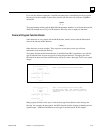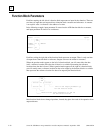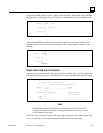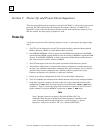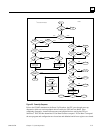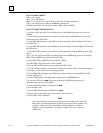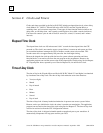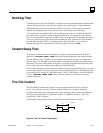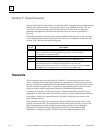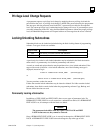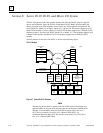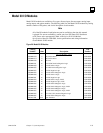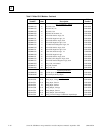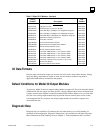
2-34 Series 90-30/20/Micro Programmable Controllers Reference Manual
–
September 1998 GFK-0467K
2
Section 4: Clocks and Timers
Clocks and timers provided by the Series 90-30 PLC include an elapsed time clock, a time-of-day
clock (Models 331, 340/341, 350 and 360 series of 90-30 CPUs and the 28-point Micro), a
watchdog timer, and a constant sweep timer. Three types of timer function blocks include an on-
delay timer, an off-delay timer, and a retentive on-delay timer (also called a watch clock timer).
Four time-tick contacts cycle on and off for 0.01 second, 0.1 second, 1.0 second, and 1 minute
intervals.
Elapsed Time Clock
The elapsed time clock uses 100 microsecond “ticks” to track the time elapsed since the CPU
powered on. The clock is not retentive across a power failure; it restarts on each power-up. Once
per second the hardware interrupts the CPU to enable a seconds count to be recorded. This
seconds count rolls over approximately 100 years after the clock begins timing.
Because the elapsed time clock provides the base for system software operations and timer
function blocks, it can not be reset from the user program or the programmer. However, the
application program can read the current value of the elapsed time clock by using Service Request
16. Elapsed power down, reported by use of Service Request 29, also utilizes this clock.
Time-of-Day Clock
The time of day in the 28-point Micro and Series 90-30 PLC Model 331 and higher is maintained
by a hardware time-of-day clock. The time-of-day clock maintains seven time functions:
• Year (two digits)
• Month
• Day of month
• Hour
• Minute
• Second
• Day of week
The time-of-day clock is battery-backed and maintains its present state across a power failure.
However, unless you initialize the clock, the values it contains are meaningless. The application
program can read and set the time-of-day clock using Service Request #7. The time-of-day clock
can also be read and set from the CPU configuration software.
The time-of-day clock is designed to handle month-to-month and year-to-year transitions. It
automatically compensates for leap years until the year 2079.




